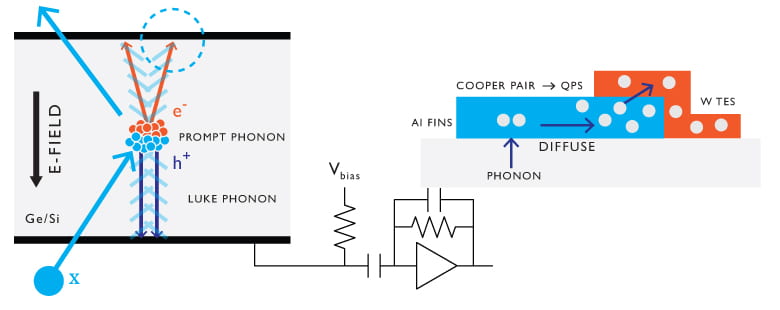The SuperCDMS (Cryogenic Dark Matter Search) SNOLAB experiment, the fourth generation of the CDMS project, is a DOE/NSF-funded direct detection dark matter search experiment that exploits the nuclear recoil energy induced by dark matter-nucleus scattering through phonon and ionization signals.
The phonon signal warms up the tungsten TESs (transition-edge sensors), and the current change in the input coil is measured with SQUID (superconducting quantum interference device) arrays while the HEMT (high electron mobility transistor) amplifier is used to measure the ionization signal. There are two types of detectors, iZIP (interleaved Z-dependent Ionization and Phonon) and HV (high-voltage) detectors, where the phonon and ionization signals in the iZIP detector provide an excellent signal-to-noise ratio while the HV detector can have a significantly low energy threshold with the enhanced phonon signal from the Neganov-Luke effect. Detectors are deployed in the underground facility and operated at temperatures of about 50 millikelvins to minimize the background and noise.

For more information visit: SuperCDMS Website Link